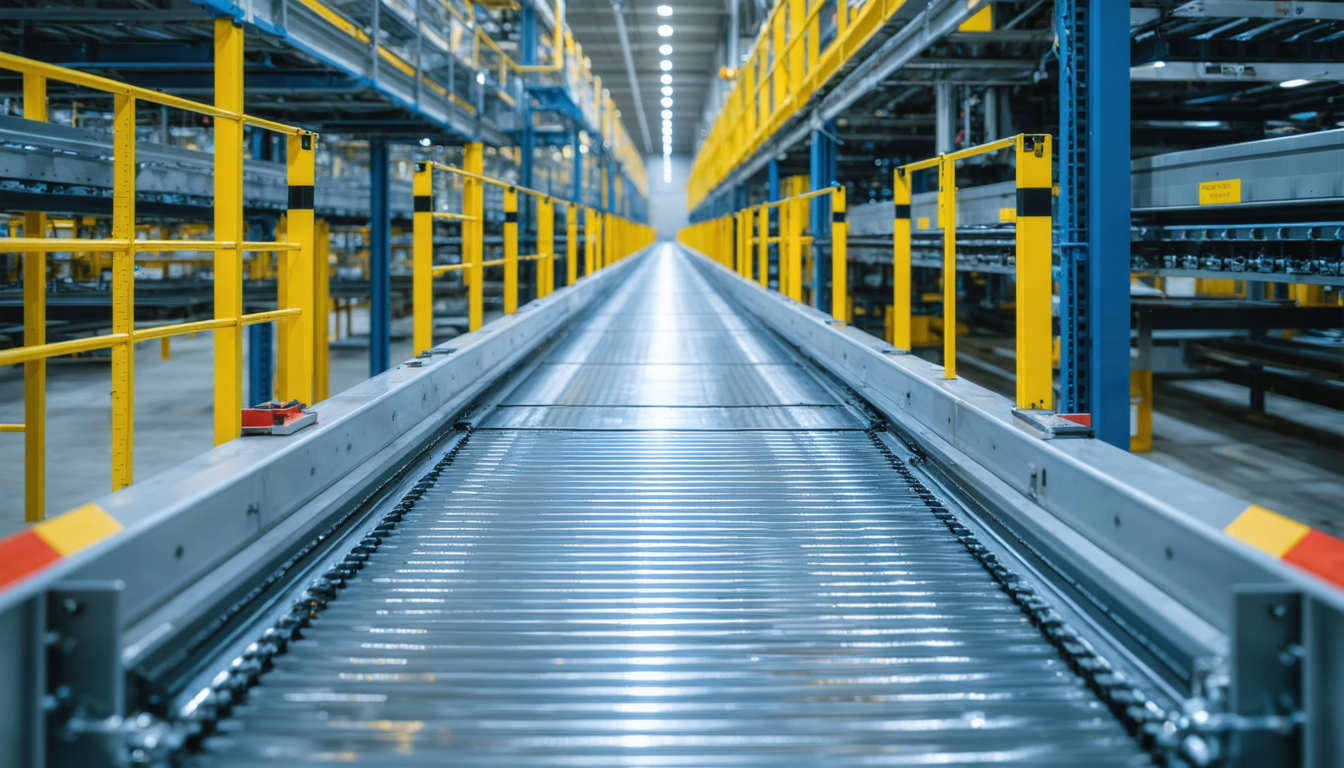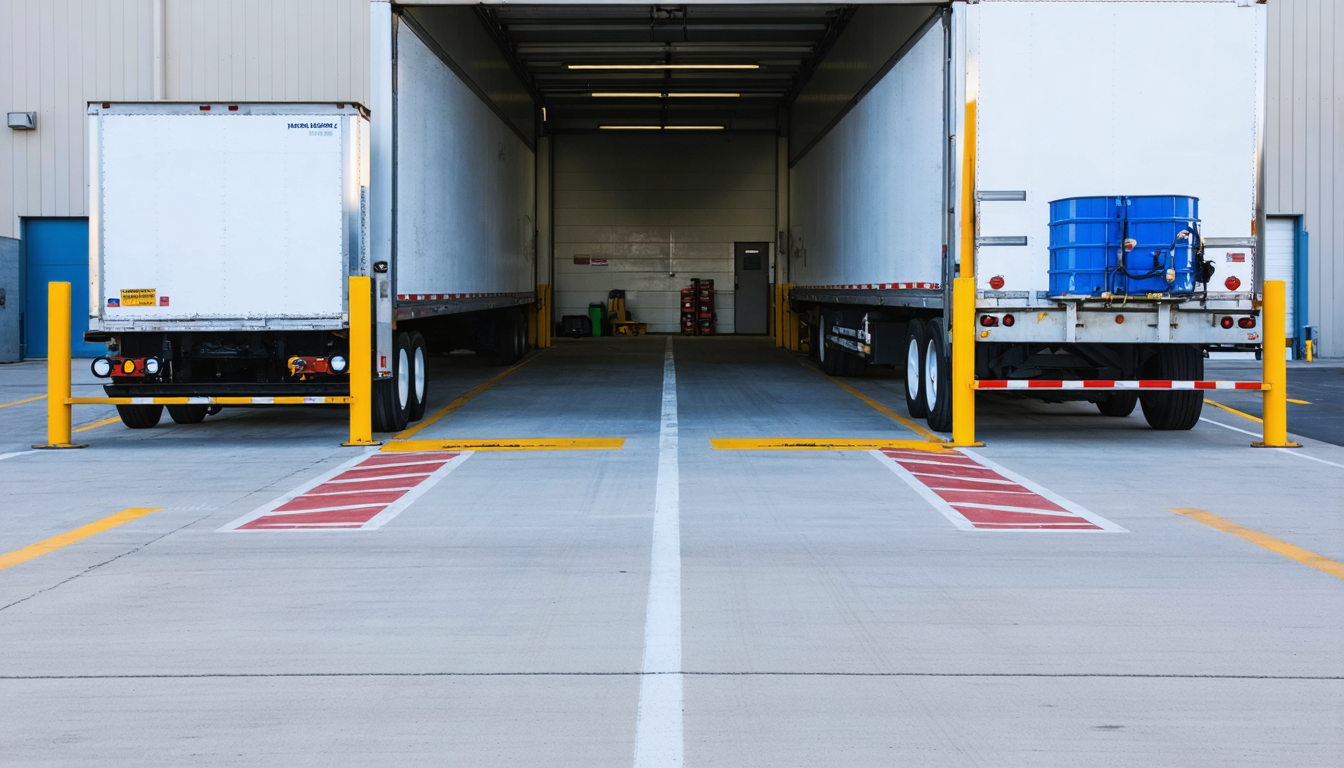Each year, struck-by moving objects accidents rank among the most serious—and expensive—workplace injuries in warehousing. These incidents are a leading driver of injury-related losses, disrupting operations and driving up insurance costs.
The risk of most struck-by accidents can be reduced. By combining proven safety protocols with video AI, safety leaders can move from reacting after an incident to addressing risks before they escalate. This guide breaks down the true costs, root causes, and offers a clear framework for moving from a reactive to a forward-looking safety model using current technology.
Why struck-by moving object accidents are a major liability for warehousing
Struck-by accidents represent a leading operational risk for any warehouse. Unlike minor bumps or cuts, these incidents often involve heavy machinery, or vehicle collisions, resulting in severe injuries to feet, legs, hands, and hips.
The average OSHA penalty per incident is $8,955, but this figure doesn’t include indirect costs. Indirect costs—like overtime, temporary staffing, retraining, lost productivity, and legal fees—can multiply the total impact by three to five times the direct expense. In a high-turnover, fast-moving environment, even a single incident can disrupt schedules and delay shipments.
Struck-by incidents are a top driver of lost-time injuries, regulatory fines, and operational headaches in warehousing. Anticipatory safety measures are mission-critical for financial and operational health.
The top 5 causes of struck-by moving objects accidents in warehousing—and how to mitigate them
Understanding why these accidents happen is the first step. Here are the top five causes in warehouses, with actionable safety strategies and how video AI can enhance safety efforts.
1. Forklift and Vehicle Collisions
The Hazard:
In a bustling distribution center, a worker heads down an aisle just as a forklift operator—carrying a high stack—turns the corner. The load blocks the operator’s view. There’s no physical barrier, and the two collide. Incidents like this are frequent, especially at intersections or when visibility is low.
Traditional Safety Measures:
Traffic management plans with painted walkways and designated crossing points.
Physical barriers and bollards to separate people and machines.
Operator certification and refresher training.
Speed limits and right-of-way rules.
How AI Enhances Safety:
Video AI can monitor intersections and high-traffic aisles 24/7. The system can detect “vehicle enters no-go zones” events, flagging unsafe interactions between vehicles and pedestrians in real time. Safety teams get real-time alerts and can review incident clips, making it easy to identify problem areas and retrain staff to reduce the risk of an accident.
2. Falling Objects from Racks or Loads

The Hazard:
A worker is picking orders below a high rack when a poorly stacked pallet above shifts and drops several boxes. Injuries to the head, neck, and shoulders are common; in some cases, workers are struck in the legs or feet by heavy items.
Traditional Mitigation:
Regular inspection of pallet racks for overloading and damage.
Use of load securing (wrapping, strapping).
Rules for safe stacking heights and weight limits.
PPE enforcement—hard hats and safety footwear.
How AI Enhances Safety:
Video AI can monitor racks and storage zones, detecting when people are loitering in danger zones. When a worker enters a no-go zone under a raised load, the system can alert supervisors in real time, helping enforce best practices and trigger fast interventions.
3. Unsafe Maintenance and Clearing Jams

The Hazard:
During a busy shift, a worker tries to clear a jam in a conveyor without shutting it down. The conveyor starts moving, and the worker’s hand is caught between moving parts. Many injuries—especially amputations—happen when safety procedures are skipped for the sake of speed.
Traditional Mitigation:
Lockout/tagout (LOTO) protocols for all maintenance (Source: OSHA).
Machine guarding and regular equipment checks.
Task-specific training and refresher courses.
Incident reporting and root cause analysis.
How AI Enhances Safety:
AI systems can detect when a person is present in a restricted area (“person enters no-go zones”), sending alerts to supervisors. Reviewing flagged video clips helps safety teams pinpoint unsafe practices and reinforce LOTO compliance.
4. Loading Dock and Door Accidents

The Hazard:
A worker is unloading a truck at a loading dock. Wind catches an unsecured door, or a semi-truck moves unexpectedly—striking workers or causing loads to fall. Many incidents involve doors, dock plates, and miscommunication between drivers and warehouse staff.
Traditional Mitigation:
Use of dock locks and wheel chocks to secure trailers.
Clear communication protocols between drivers and staff.
Regular inspection and maintenance of dock equipment and doors.
Signage and floor markings to keep people out of danger zones.
How AI Enhances Safety:
AI analytics can monitor loading docks for “vehicle enters no-go zones,” flagging unsafe vehicle movement or pedestrians in restricted areas. Timely alerts help reduce the risk of dock strikes, and recorded footage streamlines incident investigations.
5. Poor Visibility and Environmental Factors

The Hazard:
A worker rounds a corner in a dimly lit aisle, unaware a forklift is approaching in reverse. Obstructed sightlines, wet floors, and cluttered walkways can all contribute to struck-by injuries.
Traditional Mitigation:
Adequate lighting and regular housekeeping.
High-visibility PPE for workers.
Mirrors at intersections and blind spots.
Environmental controls (anti-slip flooring, ventilation).
How AI Enhances Safety:
AI-powered cameras can flag “running” (a sign of rushing or distraction), “loitering” in unsafe areas, or “crowding” in aisles. By pinpointing where these behaviors frequently happen, safety teams can identify environmental hazards and target lighting upgrades or adjust floor layouts for better visibility and flow.
Integrating a video AI camera system: from NVR to AI insights in warehousing
For leaders in operations, safety, or IT, upgrading safety tech usually sparks concerns: Will it work with our existing cameras? Will we need to rip out all our hardware? What about storage and user access?
Here’s how a video AI camera system fits into your warehousing environment:
Feature |
Traditional NVR system |
Modern video AI platform |
|---|---|---|
Camera Compatibility |
Often requires new cameras |
Works with existing POE/legacy cameras |
Storage |
On-premise hardware |
Secure, cloud-native, scalable |
Maintenance |
Frequent, on-site |
Minimal, remote updates |
User Access |
Limited seats |
Unlimited users, unified dashboard |
Video Review |
Manual, slow |
AI-powered search & incident detection |
Actionable Insights |
Passive footage |
Real-time alerts for no-go zone violations, running, crowding, and more |
A cloud-based AI solution bridges your existing cameras—old or new—to a secure, cloud-native dashboard. No need to rip and replace. It automates detection of critical safety events (like no-go zone entries), flags footage for fast review, and empowers unlimited users to monitor and act—all from a single dashboard.
Unlike standard NVRs, the AI layer turns video from a passive record into an active safety tool. It surfaces specific events like no-go zone violations, running, and crowding, so your team can respond before a minor issue becomes a major incident.
Practical integration tips:
Prioritize solutions that support your current OSHA compliance and traffic control policies.
Look for platforms that accept both modern and legacy camera feeds.
Choose systems with swift alerts and unlimited user access, so safety isn’t siloed.
Align technology upgrades with broader safety goals—integrate with training, incident reporting, and regular risk audits.
Transform warehouse safety—book a safety consultation
Every struck-by incident is a signal—an opportunity to build safer habits, stronger teams, and more resilient operations. With the right combination of forward-thinking protocols and video AI, warehousing leaders can significantly reduce accidents, speed up investigations, and help create a safer work environment.
Want to see how video AI can help your safety team reduce risk and respond faster? Request a live demo to experience Spot AI in action.
Frequently asked questions
What are the main causes of struck-by moving objects injuries in warehousing?
The leading causes are collisions with moving vehicles (especially forklifts and pallet jacks), get-ting caught in equipment, being struck by doors or dock plates, and poor visibility in aisles.
How to reduce forklift and vehicle collisions in my warehouse?
Combine strict traffic management (barriers, floor markings), regular operator and pedestrian training, and ongoing equipment maintenance. Video AI can detect no-go zone violations rapidly, helping you address risks before they become injuries.
Can AI camera systems work with existing warehouse cameras?
Yes. Cloud-based video AI platforms are designed to work with most existing POE or legacy cameras. They add an AI analysis layer on top of your current video feeds, so you don’t need to replace your entire camera network.
What practical steps to take before deploying safety technology in my warehouse?
Start with a risk assessment—identify high-traffic and high-risk zones, review camera coverage, and engage your safety, operations, and IT teams. Pilot the AI system in a problem area, review the alerts and insights, and expand based on measurable improvements.
Does using video AI help with OSHA compliance?
Yes. Video AI can support compliance by flagging potential safety violations, providing searchable incident records, and giving you data-driven information to improve training, policies, and audits.
What is the best AI video monitoring system for workplace safety?
The best system is defined by its capabilities, not just a brand name. Look for a platform that integrates with your existing cameras to avoid costly replacement. It should provide real-time alerts for specific risks like no-go zone violations, offer a unified dashboard for multi-site visibility, and include unlimited user seats. This approach democratizes safety by giving your entire team the tools to act preemptively.
About the author
Joshua Foster is an IT Systems Engineer at Spot AI, where he focuses on designing and securing scalable enterprise networks, managing cloud-integrated infrastructure, and automating system workflows to enhance operational efficiency. He is passionate about cross-functional collaboration and takes pride in delivering robust technical solutions that empower both the Spot AI team and its customers.

























.png)
.png)
.png)